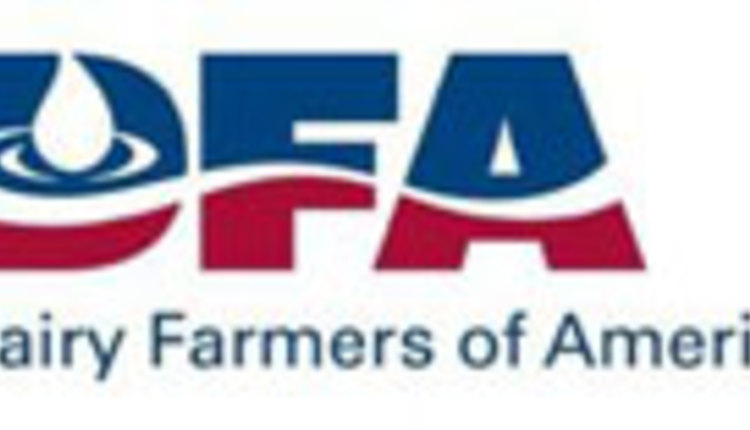
“There should be a law against that! It’s so buttery, flaky, and delicious!” exclaimed Luke Zahm during the February 16, 2023, episode of the "Wisconsin Foodie."
Now, Zahm, who is the host of the "Wisconsin Foodie," wasn’t really talking about creating a law.
He was sharing his firsthand dining experience while eating a mini wheel of the Hoard’s Dairyman Farm Creamery’s St. Saviour. That Camembert-style cheese had earned a Bronze Award at the World Cheese Awards held at the Palacio de Exposiciones in Oviedo, Spain. The entree featured on the Wisconsin Public Television episode was brought to full life when the Union House’s Dan Harrell wrapped the St. Saviour in a puff pastry, lightly coated it in an egg-yolk glaze, and cooked it in a conventional oven for 12 minutes at 425°F.
“Buttery, flaky, and delicious,” soon began rolling off Zahm’s tongue in between savoring bites.
While this modern-day television scene during the 15th season of "Wisconsin Foodie" showcases one of the nearly 700 specialty cheese varieties now crafted throughout Wisconsin, the episode is showcasing a story that is over 150 years in the making.
America’s Dairyland is born
“It has been tested and proven that we cannot raise wheat in Wisconsin. But we can raise good butter and good cheese, without killing our land, but rather enriching it.” — Governor W.D. Hoard.
And so, life was breathed into a business movement that would transform Wisconsin into America’s Dairyland as farmers began both a personal and economic love affair with dairy cows. Throughout the journey, Wisconsin began churning out a host of world-renowned dairy products, particularly cheese.
The dairy-farming culture eventually became so entrenched in the Badger State’s persona that the words “America’s Dairyland” began appearing on license plates in 1940. Those words have been there ever since.
Governor Hoard’s aforementioned quote was more than a pithy line in a political speech. Hoard, a man of action, set about creating what would become America’s Dairyland through both leadership and action. Via the Wisconsin Dairymen’s Association, Hoard secured the first refrigerated railcar to ship Wisconsin cheese to the lucrative East Coast markets. The Wisconsin Dairymen’s Association helped would-be business owners set up butter and cheese plants. That was already taking place in the 1870s.
A decade later, Hoard ran as the “Cow Candidate” and the people elected him Wisconsin’s 16th Governor. From that leadership position, Hoard soon started the College of Agriculture at the University of Wisconsin. North America’s first dairy science department and food science department quickly followed.
The forward-thinking Hoard helped recruit Stephen Babcock, one of the world’s foremost dairy scientists, to the new college. By 1890, Babcock perfected his Babcock Test to determine butterfat levels in milk. That, in turn, helped standardize milk pricing. Like Hoard, Babcock was a man of the people working for the greater good. Hence, Babcock never patented that test. He put it out there so others would come to enjoy business success.
Years later, as president of the University of Wisconsin’s Board of Regents, Hoard would help give the push to create the university’s first genetic department. That, of course, would be for cows, too.
A magazine, dairy processing, and a farm
While many throughout the dairy community have come to appreciate the Hoard’s Dairyman magazine and others may know we also have a historic dairy farm dating back to 1899, few may know the storied history of the W.D. Hoard & Sons Company’s footprint in dairy processing.
The very same year Hoard’s Dairyman magazine began rolling off presses in 1885, W.D. Hoard’s son, Arthur, broke ground on the Hoard’s Creameries. Eventually, Arthur and his family would own 13 creameries as his plants churned out fancy “Gilt Edge Butter.” Decades later, that branch of the Hoard family sold off the butter division and the company ceased to exist in 1966 under the new ownership group.
In addition to the Hoard’s Creameries, the historic Hoard’s Dairyman Farm also operated a bottling plant for its milk from the Governor’s Guernsey herd. That division came to a close in the early 1950s, although its highly collectable milk bottles exist to this very day.
While it may have been cows producing milk to fill those bottles, it was Hoard’s belief that Wisconsin could grow and overwinter alfalfa that ultimately brought the Hoard’s Dairyman Farm to life. In 1899, the year Hoard bought his farm, Wisconsin had a scant 800 acres of the perennial crop. Due to Hoard’s research and writing, USDA chronicled that Wisconsin had 25,000 acres of the crop by 1910. Because of the groundbreaking alfalfa research, the U.S. Department of Interior placed the Hoard’s Dairyman Farm on the National Register of Historic Places in 1978.
Back to the beginning
That brings us back to the "Wisconsin Foodie" as the Hoard’s Dairyman Farm Creamery brought us back to our roots in 2018 when the first batch of Belaire, a Port-Salute style cheese, began reaching store shelves. Steeped in tradition, the Belaire name was selected by Brian Knox, President of W.D. Hoard & Sons Company, in honor of Captain Belaire who brought the first Guernsey cattle to the United States.
After Belaire, St. Saviour (Camembert-style), Sark (Butterkase-style), Governor’s Select (Aged Cheddar), Castel (Manchego-style), Gouda, and a Dry Jack all joined the Hoard’s Dairyman Farm Creamery portfolio.
The modern-day Hoard’s Dairyman Farm Creamery runs on a collection of highly skilled in-house talent, the fine cheesemakers at Edelweiss Creamery and the Union Star’s Willow Creek Cheese Factory, retailers, and restaurants. True to tradition, some of the milk for that cheese comes from cows that trace their family trees back to Governor Hoard’s original herd.
To learn more about the super buttery notes in St. Saviour, watch the February 16, 2023, episode of the "Wisconsin Foodie."
Also, a behind the scenes discussion with Arthur Ircink, the executive producer of the "Wisconsin Foodie," Zahm, and yours truly can be viewed via Facebook.








